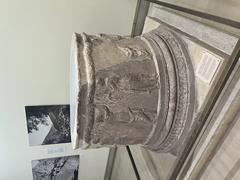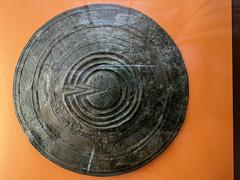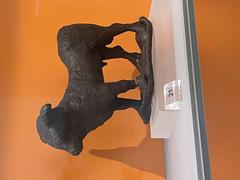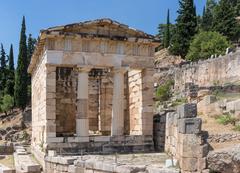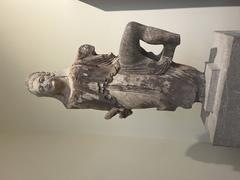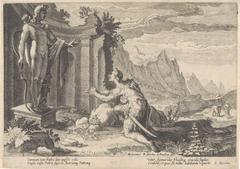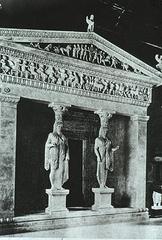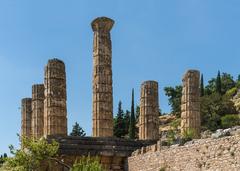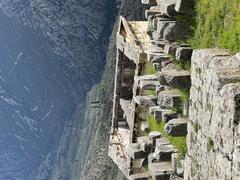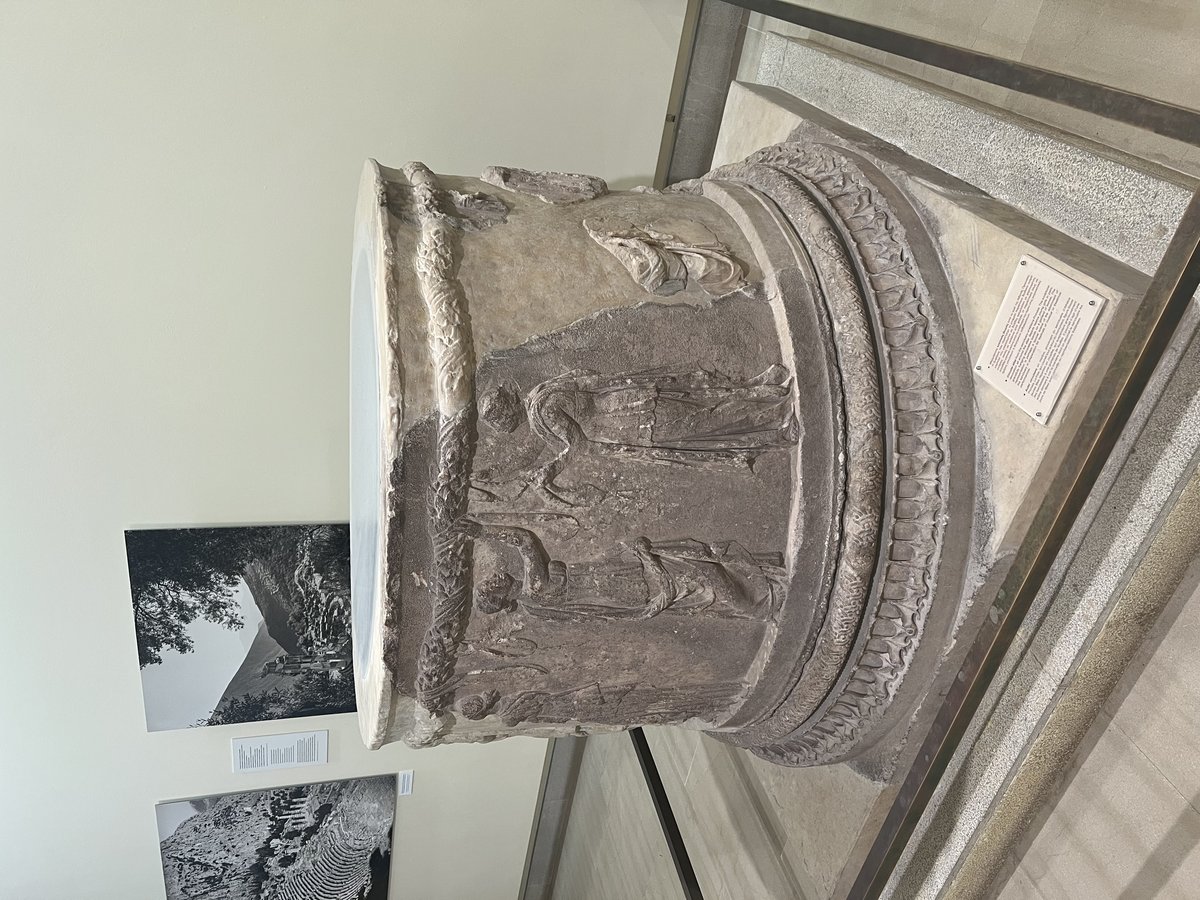
Delphi Archaeological Museum: Visiting Hours, Tickets, and the Ultimate Guide to Delphi Historical Sites
Date: 14/06/2025
Introduction
Perched on the scenic slopes of Mount Parnassus, the Delphi Archaeological Museum stands as a gateway to the spiritual and cultural heart of ancient Greece. Once revered as the “navel of the Earth,” Delphi was home to the Oracle of Apollo, a center of prophecy and decision-making for the ancient world. Today, the museum preserves and presents a vast array of artifacts—from the Mycenaean era through Late Antiquity—offering a journey through over a millennium of Greek civilization.
This in-depth guide equips travelers and history enthusiasts with everything needed for a meaningful visit: up-to-date visiting hours, ticketing details, accessibility information, must-see exhibits, and practical travel tips. Whether you’re a first-time visitor or a returning explorer seeking deeper insights, use this resource to maximize your Delphi experience. For the latest official updates, refer to the Delphi Museum website.
Table of Contents
- Introduction
- Museum History and Development
- Exhibition Highlights
- Practical Visitor Information
- Must-See Nearby Attractions
- Frequently Asked Questions (FAQ)
- Conclusion and Visitor Tips
- Sources and Official Links
Museum History and Development
Early Foundations (1903–1935)
The Delphi Archaeological Museum was established in 1903, following significant French excavations that began in the late 19th century. Funded by Greek philanthropist Andreas Syngros and designed by French architect Albert Tournaire, the original structure housed early finds from the Sanctuary of Apollo and other areas of Delphi. Its initial displays focused on statues, votive offerings, and architectural fragments that spanned from the Mycenaean period to the Byzantine era, reflecting Delphi’s spiritual and cultural prominence.
Wartime and Mid-century Expansions (1935–1958)
As the museum’s collection grew, expansions and renovations in the 1930s and 1950s modernized its galleries and improved artifact preservation. During World War II, many treasures were safeguarded in Athens to prevent loss. Post-war renewal in 1958 brought contemporary museological approaches and reorganized displays to enhance visitor engagement.
Modernization and 21st Century Transformation
A major renovation from 1999 to 2003, led by architect Alexandros Tombazis, transformed the museum with a sleek new façade, enlarged exhibition spaces, and improved accessibility. The museum now hosts fourteen chronologically arranged halls over 2,270 square meters, guiding visitors from Delphi’s earliest religious practices through its role as a pan-Hellenic sanctuary.
Exhibition Highlights
The Charioteer of Delphi
One of antiquity’s most celebrated bronzes, the Charioteer of Delphi (c. 470 BCE), commemorates a victory in the Pythian Games. With its lifelike details and striking inlaid eyes, the statue exemplifies the transition from Archaic to Classical Greek art. Displayed in a dedicated gallery, it offers a rare opportunity to admire the artistry of ancient bronze sculpture (The Delphi Guide).
The Sphinx of Naxos
This monumental marble sculpture, dating to the 6th century BCE, once crowned a tall Ionic column as a votive offering from the island of Naxos. The Sphinx’s imposing form and mythological symbolism highlight both the artistic achievements and the religious devotion of Delphi’s visitors (mydelphipass.com).
The Omphalos and Architectural Fragments
The Omphalos—a carved stone marking Delphi as the mythical center of the world—embodies the sanctuary’s mythological significance. Architectural fragments and friezes from the Temple of Apollo and the Athenian Treasury, including the metopes and pediments of the Siphnian Treasury, offer insight into the ancient world’s architectural and narrative traditions (Curious Travel Bug).
Additional Highlights
- Twin Kouroi (Cleobis and Biton): Marble statues exemplifying Archaic sculpture and the ideals of youth and athleticism.
- Silver Bull: A life-sized hammered silver votive offering to Apollo, illustrating the wealth and devotion of ancient pilgrims.
- Chryselephantine Figurines: Exquisite gold and ivory statuettes depicting deities, rare survivors of this luxurious art form.
- Votive Offerings: A diverse collection of statues, figurines, coins, and everyday objects, reflecting the sanctuary’s pan-Hellenic appeal.
Practical Visitor Information
Visiting Hours
- Summer (April 1 – October 31): 08:00–20:00
- Winter (November 1 – March 31): 08:30–15:30
- Last admission: 20 minutes before closing
- Open daily, including weekends and most public holidays. Hours may vary; always check the official site for seasonal updates and exceptions.
Ticket Information
- Standard Admission: €12 (includes both museum and archaeological site)
- Reduced Admission: €6 (students, seniors, children; proof required)
- Free Admission Days: March 6, April 18, May 18, last weekend of September, October 28, and every first Sunday from November to March
- Purchase: Online (recommended for convenience) or at the entrance. E-tickets on smartphones are accepted.
Accessibility and Facilities
The museum is fully accessible, featuring step-free entry, ramps, elevators, accessible restrooms, and reserved parking. Tactile exhibits, Braille panels, and pamphlets support blind and visually impaired visitors. Staff assistance and special arrangements (including a vehicle for mobility-impaired visitors to the Temple of Apollo) are available with advance notice (Delphi Museum Accessibility).
Additional amenities include a modern café, gift shop, and water fountains. Restrooms are conveniently located inside the museum—useful before exploring the adjacent (less equipped) archaeological site.
Guided Tours and Special Events
- Guided tours: Led by archaeologists and historians, available in multiple languages.
- Audio guides: Offered for self-paced exploration.
- Special events: International Museum Day and other cultural events often include free admission and expert-led tours. Check the museum website for the latest schedule.
Getting There and Travel Tips
- From Athens: Approximately 2.5–3 hours by car (180 km/112 miles). Intercity buses depart regularly from Athens’ Liosion Street Station.
- Parking: Ample parking, including designated spots for people with disabilities.
- Best times to visit: Early morning or late afternoon for fewer crowds, especially in peak season.
- Recommended duration: Allocate at least 1–1.5 hours for the museum; a combined visit with the archaeological site typically takes 3–4 hours.
- Photography: Non-flash photography generally permitted; restrictions may apply in select galleries.
Must-See Nearby Attractions
- The Archaeological Site of Delphi: Explore the Temple of Apollo, ancient theater, stadium, and Treasury of the Athenians.
- Arachova Village: A picturesque mountain town with traditional cuisine and shops.
- Sanctuary of Athena Pronaia: Featuring the iconic circular Tholos, a short walk from the main site.
- Mount Parnassus: Offers panoramic views and hiking opportunities.
Frequently Asked Questions (FAQ)
Q: What are the Delphi Archaeological Museum visiting hours?
A: Summer: 08:00–20:00; Winter: 08:30–15:30; last admission 20 minutes before closing.
Q: How much are tickets, and how can I buy them?
A: Standard tickets are €12 (includes museum and site), with reduced and free options available. Purchase online or onsite; e-tickets are accepted.
Q: Is the museum accessible for people with disabilities?
A: Yes, the museum is fully accessible, with additional services for visitors with visual or mobility impairments.
Q: Are guided tours available?
A: Yes, both guided tours and audio guides are offered; check the museum website for scheduling and booking.
Q: Can I take photographs inside?
A: Non-flash photography is permitted in most areas. Always check for restrictions in specific galleries.
Q: What other sites should I visit nearby?
A: The adjacent archaeological site, Sanctuary of Athena Pronaia, and Arachova village are highly recommended.
Conclusion and Visitor Tips
The Delphi Archaeological Museum presents a captivating narrative of Greek civilization at one of the world’s most storied sanctuaries. With carefully curated exhibits, modern accessibility, and supportive visitor amenities, it offers a rewarding experience for all. To enhance your visit, download the Audiala app for immersive audio guides, and follow us on social media for the latest news and insights.
Plan your visit today to delve into the mysteries of Delphi and walk in the footsteps of history.
